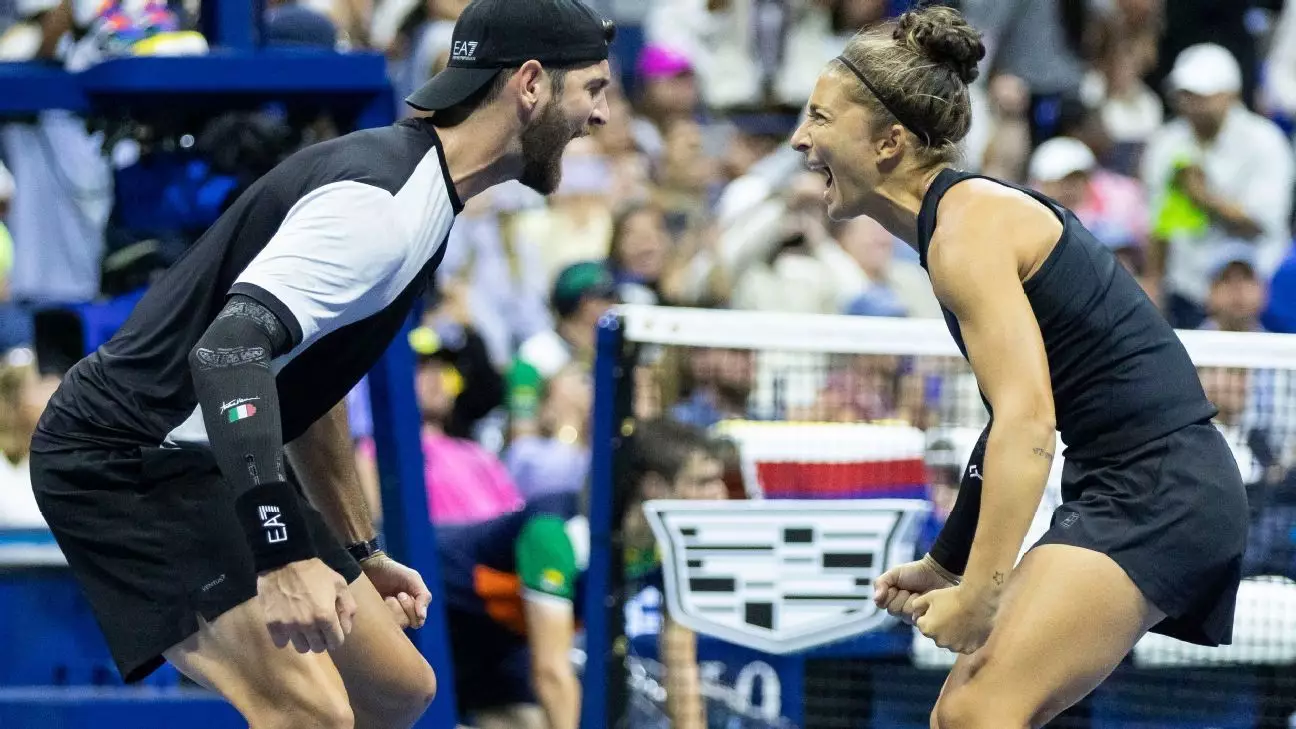The recent upheaval at the US Open is more than just a change in scheduling or format; it is a bold statement resonating through the tennis community. Traditionally, Grand Slam doubles tournaments have been the stage for specialists, showcasing intricate teamwork, tactical volleys, and specialized skills. However, in a calculated move to elevate the tournament’s profile, U.S. Open organizers redesigned the event entirely. The new format prioritized star power and spectator engagement over historical doubles traditions, igniting heated debates among players and fans alike.
Many doubted whether this overhaul could succeed outside the familiar, nuanced ecosystem of doubles. Critics argued that the stripped-down sets and condensed schedule would diminish the sport’s depth, turning the grand spectacle into an exhibition rather than a serious competitive event. Yet, the story emerging from this experiment defies skepticism. In a remarkable display of resilience and skill, the underdog Italian duo of Sara Errani and Andrea Vavassori not only defended their title but also exemplified how innovation can breathe new life into legacy sports.
Their victory resonates as a compelling testament that adaptability and passion can challenge entrenched norms. They seized the opportunity, demonstrating that doubles tennis has untapped potential when presented in a format designed to captivate modern audiences. By doing so, Errani and Vavassori proved that even with radical structural changes, the essence of athletic excellence and teamwork remains vital—an inspiring lesson for all sports administrators and players.
The Power of Resilience: Underdogs Rise to the Occasion
Errani and Vavassori’s triumphant return to New York was anything but guaranteed. The previous year, their journey had been modest, overshadowed by singles stars and under the shadow of grander narratives. This year, however, their perseverance and belief elevated them from overlooked contenders to champions. Challenged from the start, they navigated tough matches, culminating in a tense final where they edged out top-ranked opponents Iga Swiatek and Casper Ruud, both formidable singles players with multiple Grand Slam titles.
What makes this victory noteworthy is not just the upset against haute tennis elites but the spirit of rebellion portrayed on the court. Their match-winning strategy—a combination of height, agility, and relentless court coverage—highlighted essential doubles tactics that often go unappreciated in the solo-dominated landscape. Vavassori’s tall stature and quick net movements made him a difficult target, disrupting the baseline precision of Swiatek and Ruud. Errani’s vast doubles experience added composure and strategic finesse, emphasizing that doubles is a specialized craft demanding more than raw power.
This win signals that success in doubles is rooted in understanding the nuanced dance of the game—communication, positioning, and adaptability. For Errani and Vavassori, their journey was not just about defending a title but advocating for the depth and richness of doubles tennis, which many believe is underappreciated in the modern era dominated by top singles stars.
Reimagining Spectacle and Audience Engagement
The tournament overhaul aimed to reposition doubles success within the broader spectacle of tennis. By scheduling the event before singles and incorporating shorter matches, organizers sought to attract bigger crowds and generate buzz. The experiment was high-stakes, controversial, and undeniably daring. Critics labeled it a superficial overhaul that risked undermining the sport’s integrity, fearing it would devolve into a glorified exhibition.
Nevertheless, the atmosphere in Arthur Ashe Stadium told a different story. Packed stands, enthusiastic chants, and packed houses demonstrated that the new format resonated with many spectators. The event’s energy, amplified by a rooftop enclosure due to rain, created an electric environment that seemed to transcend the traditional passivity associated with doubles matches.
Remarkably, even high-profile singles champions like Carlos Alcaraz, Emma Raducanu, and Novak Djokovic had their early exits, but the crowd remained captivated. The success of Errani and Vavassori’s team final illustrates how the new event style energized the audience, challenging the idea that only singles can draw big crowds. In this light, the tournament’s boldness might mark a pivotal shift, emphasizing that entertainment value and athletic prowess can coexist in the doubles domain.
This evolution does not mean the end of traditional doubles play but suggests a hybrid future where innovation can coexist with roots. While purists may recoil at the changes, the reality is clear: engaging more viewers requires daring experiments, and this US Open experiment, at least for now, delivered that promise.
The Future of Doubles: Tradition Meets Transformation
As the dust settles, one question remains: does this new format signal the demise of conventional doubles or its rebirth in a modern guise? The response seems to be a resounding affirmative—if these tournaments can attract larger audiences and elevate the sport’s visibility, they are worth exploring further.
The victory of Errani and Vavassori is more than a mere sporting achievement; it is a rebuke of complacency. They exemplify that doubles tennis can reinvent itself by embracing innovation while honoring the skills that make it unique. Their success serves as proof that when players and organizers adopt a forward-thinking mindset, the sport can thrive amid change.
Furthermore, their triumph highlights a broader truth: that passion, perseverance, and adaptability are the enduring attributes that will carry tennis—and perhaps all sports—into a more vibrant future. As organizers continue to experiment, they must balance tradition with innovation, understanding that the sport’s soul lies not only in its history but also in its capacity to evolve. The 2023 US Open doubles event has set a precedent—undaunted by controversy and fueled by genuine excitement—that change, thoughtfully applied, can elevate the sport we cherish.


Leave a Reply